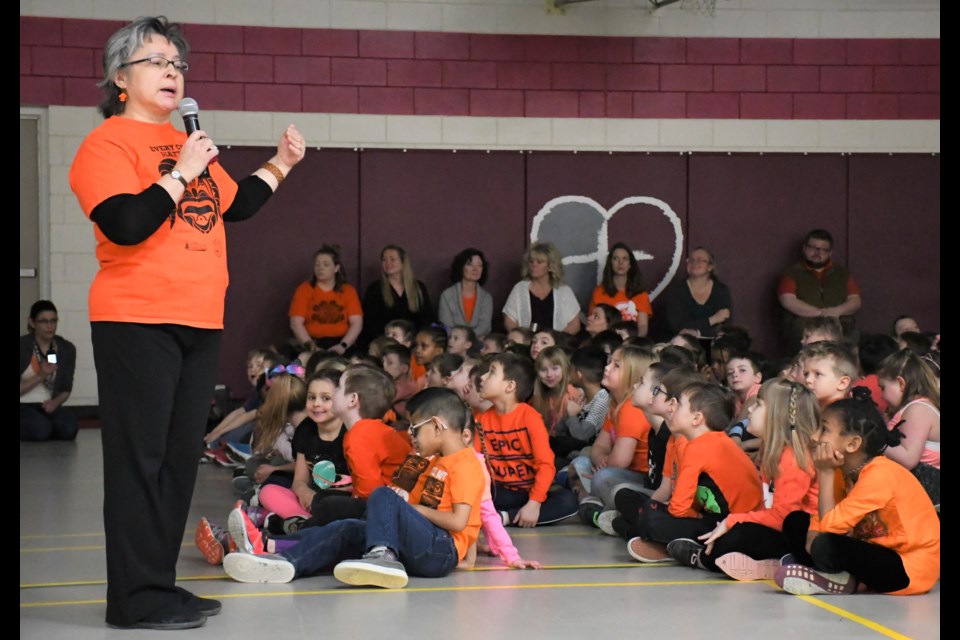Students in Moose Jaw had the opportunity to hear from a residential school survivor whose experience was the inspiration for Orange Shirt Day across Canada.
Phyllis Webstad visited Vanier Collegiate on March 3 and Sacred Heart School on March 4 as part of the Paths to Reconciliation 12-city national tour. The tour helps students from kindergarten to Grade 12 learn about the negative effects of residential schools on First Nations people.
Webstad’s story introduces the topic to young audiences, while a followup workshop uses a giant floor map to show where residential schools were. A narrated video of her book, “Phyllis’s Orange Shirt,” is also shown. The book recounts her early life on reserve and then when she was taken to the residential school, where she had her new orange shirt taken away on the first day.
Born in Dog Creek, British Columbia and now living in Williams Lake, B.C., Webstad attended St. Joseph Mission Residential School in Williams Lake from 1973-73 when she was six years old. The school was open from 1891 to 1981.
“I’m OK (now). This is not happening anymore (and) it won’t happen to you,” Webstad, 52, said at Sacred Heart. “My experience was a walk in the park (compared to the experiences of her grandmother and mother).”
Webstad took students through her early life, of how she grew up in the Fraser Valley near Churn Creek with her grandmother — who attended the Mission from 1925-35 — and how the two prepared fish. Eating fish head soup was a delight while eating fish eyes was similar to eating candy.
“It was crunchy,” she said as students groaned.
Webstad’s grandmother did her best to feed her family while living in the valley. She grew three gardens and, since they had no electricity, dug into the hillside to store their produce.
During the early existence of St. Joseph Mission, a fence divided the playground so that boys and girls — usually relatives — could not interact, hug, touch or talk with each other. When Webstad arrived, the fence had been removed but there was still an invisible line that no one was allowed to cross.
“If anyone was caught talking, they were separated and there would be severe and harsh punishment,” she said.
During her presentation, Webstad showed a picture of her grandmother dressed up for her 99th birthday. Around her grandmother’s neck is a Catholic rosary. Webstad stated she never had respect for the Catholic faith, but eventually did before her grandmother died at age 100 in 2018.
In her book, Webstad describes the nuns as “cold-hearted.”
Jumping ahead, Webstad spoke about the Truth and Reconciliation Commission (TRC) and how, in May 2013, the organization started Orange Shirt Day and chose Sept. 30 to honour it. This particular month was when children were taken to residential schools; the date was picked so schools today could have the chance to settle in before honouring this event.
After her presentation, Webstad was asked what she wanted kids to take from her talk.
“That they learn the true history of Canada,” she said. “It’s important to teach children.”
Webstad noted her grandchildren go to school with non-Aboriginal students, so she hopes her grandkids receive more respect and face less racism in the future. She noted reconciliation is not dead; instead, she is planting the seeds in students’ minds across Canada so it can live.




